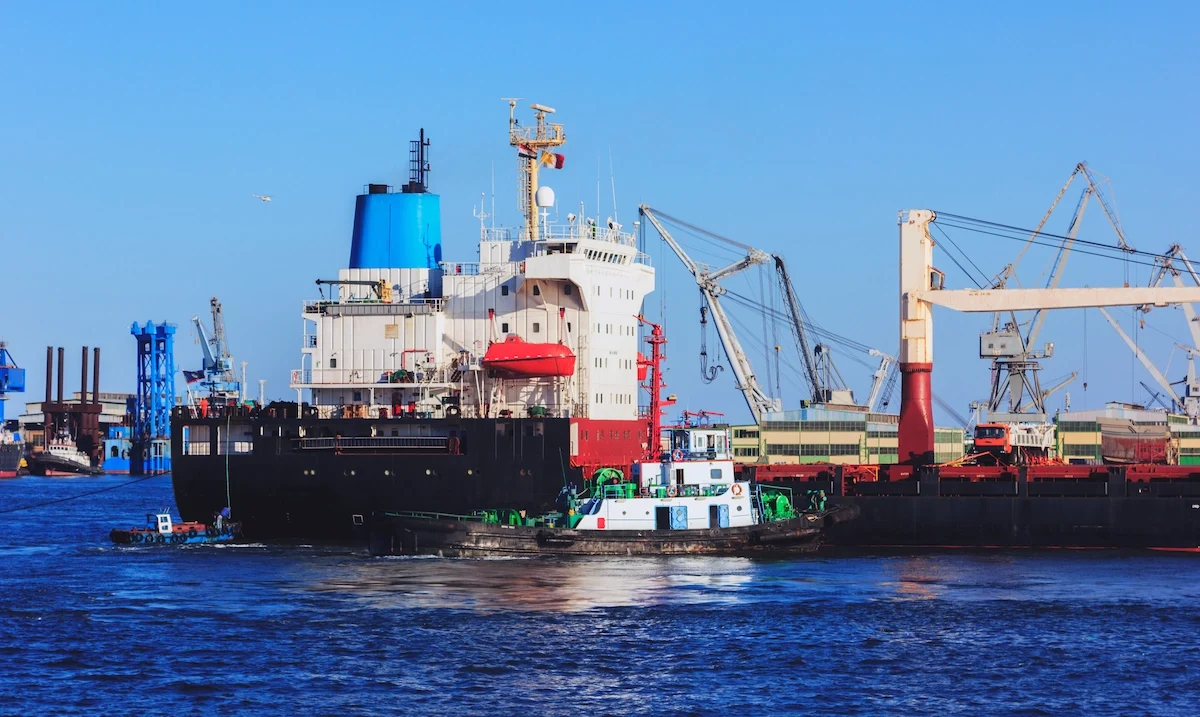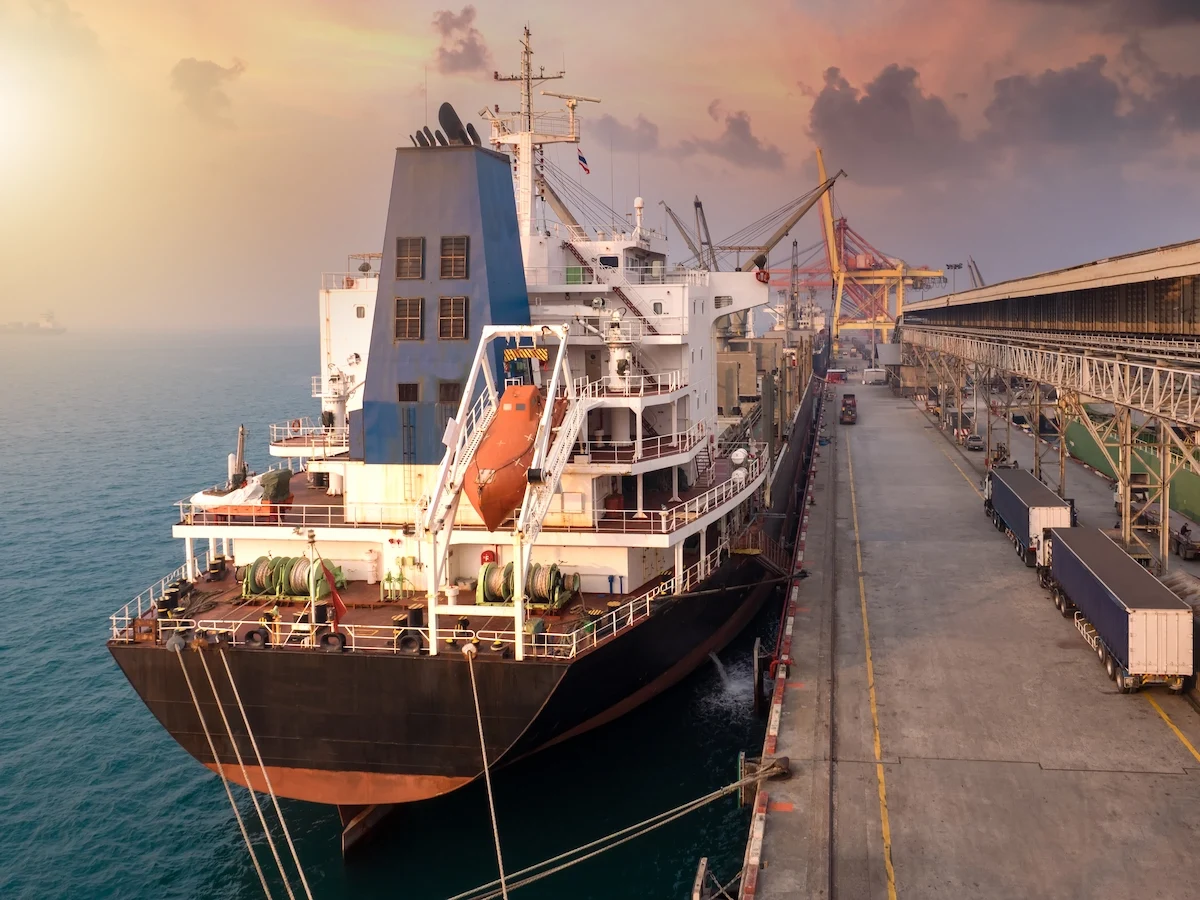
20-08-2025
What Is Bunkering, and How Do You Do the Safe Procedure?
In operating vessels, you might have already heard about bunkering. Bunkering is the process of filling fuel into the vessels. This article talks about bunkering, including the procedure and types. To learn more about this process, read this article until the end!
What Is Bunkering?

Bunkering is the process of filling a vessel with fuel, such as marine gas oil, marine fuel oil, or diesel oil. This also includes when boats and trucks deliver fuel for other ships. Refueling is carried out at terminals or via barges (ships that carry fuel).
Then, why is bunkering important? Usually, ships cannot carry all the fuel they need for long voyages. As a result, ships need to refuel several times. Also, while refueling ships, other ship crews will restock their food for the next voyage.
The process of refueling vessels is an activity that requires strict regulation and supervision due to the high risk of accidents. This is because it involves flammable materials. Oil spills when refueling from ship to ship can cause explosions and endanger the crew on duty.
Not only that, but fuel spills can also pollute the sea and its ecosystem. That’s why it is regulated by bunkering procedures. One important element in bunkering is the ship's bunker permit.
The Indonesian Ministry of Transportation has issued Standard Operating Procedures for issuing Bunker Approval Letters via Tank or Ship, including the legal basis, requirements, and procedures for submitting the letter.
Read also: 7 Port Functions for the Economy and Trading, Must Note!
Procedures of Bunkering
As explained before, bunkering is a process of refueling the ships in a strict procedure to prevent accidents and environmental damage. Then, how long does bunkering take? Due to its complex process, the refueling process can take up to 14–18 hours from filling to wrapping up. Here is the complete bunkering procedure you can learn:
1. Preparation
Preparation is an important stage that ensures that the refueling process will run smoothly. This stage also prevents the risk of an oil spill. In this stage, crews will do the following tasks:
- Equipment inspections: Ensuring that all equipment, from pumps to hoses, can work properly without any damage.
- Tank inspections: Ensuring that the tank is safe to receive the fuel.
- Safety inspections: Inspecting all the safety aspects, such as the ladder, lighting, and operational standards, as well as ensuring that the entire crew is in prime and healthy condition.
2. Refueling
Once all aspects have been checked, the team can proceed to refuel. During this process, the entire team must understand the refueling procedure, follow the guidelines, monitor the process to act quickly during an accident, and maintain control over the refueling process.
3. Wrapping Up
The last bunkering procedure is wrapping up the process safely and accurately. The crew must do the final inspection to check whether the ship has the right amount of fuel and document the refueling report.
Read also: What Is Infrastructure? Definition & Example in Industry
Types of Vessel Fuels and the Refueling Methods

In general, there are three types of fuel used based on the regulations, machine needs, and the impact on the environment. Here is the complete explanation:
- Low Sulfur Fuel Oil (LSFO): LSFO contains low levels of sulfur to comply with environmental regulations and reduce air pollution.
- Low Sulfur Marine Gas Oil: A clean fuel alternative with low sulfur content, suitable for ships that require pure fuel.
- High Sulfur Fuel Oil (HSFO): HSFO contains high levels of sulfur, making it suitable for fuel that is not strictly regulated.
Aside from those fuels, some vessels use heavy fuel oil, diesel oil, lube oil, and LNG. The refueling methods also depend on the fuel. Usually, a barge will carry marine fuel, while a truck carries lube oil and LNG.
There are three common types of bunkering methods: pipe-to-ship, ship-to-ship, and truck-to-ship. The pipe-to-ship method can be carried out at fuel terminals located at the dock.
The ship-to-ship method is carried out between barges and vessels. Then, the truck-to-ship method is carried out at the dock. Similar to fuel types, bunkering methods are also selected based on existing regulations, environmental impact, and engine capabilities.
That concludes the information about bunkering, including the definition, procedure, and types of fuel. Bunkering is one of the important elements in sea freight because it powers the vessels during the cargo delivery. Because it involves fuel, bunkering must be done according to the SOP and the existing procedure.
Regarding sea logistics, Chandra Asri Group offers a logistics service through PT Chandra Shipping International and PT Marina Indah Maritim with 9 chemical and gas vessels of 106,650 DWT. Yet, the number might increase as time goes by.
In addition to vessels, Chandra Asri Group operates land logistics through PT SCG Barito Logistics. This logistics service also includes inter-island transportation, export-import facilities, sea freight services, and customs. Right now, we have 155 trucks and warehouses in the Java and Cilegon areas.
Read also: Sustainable Infrastructure: Definition, Dimension, & Benefit